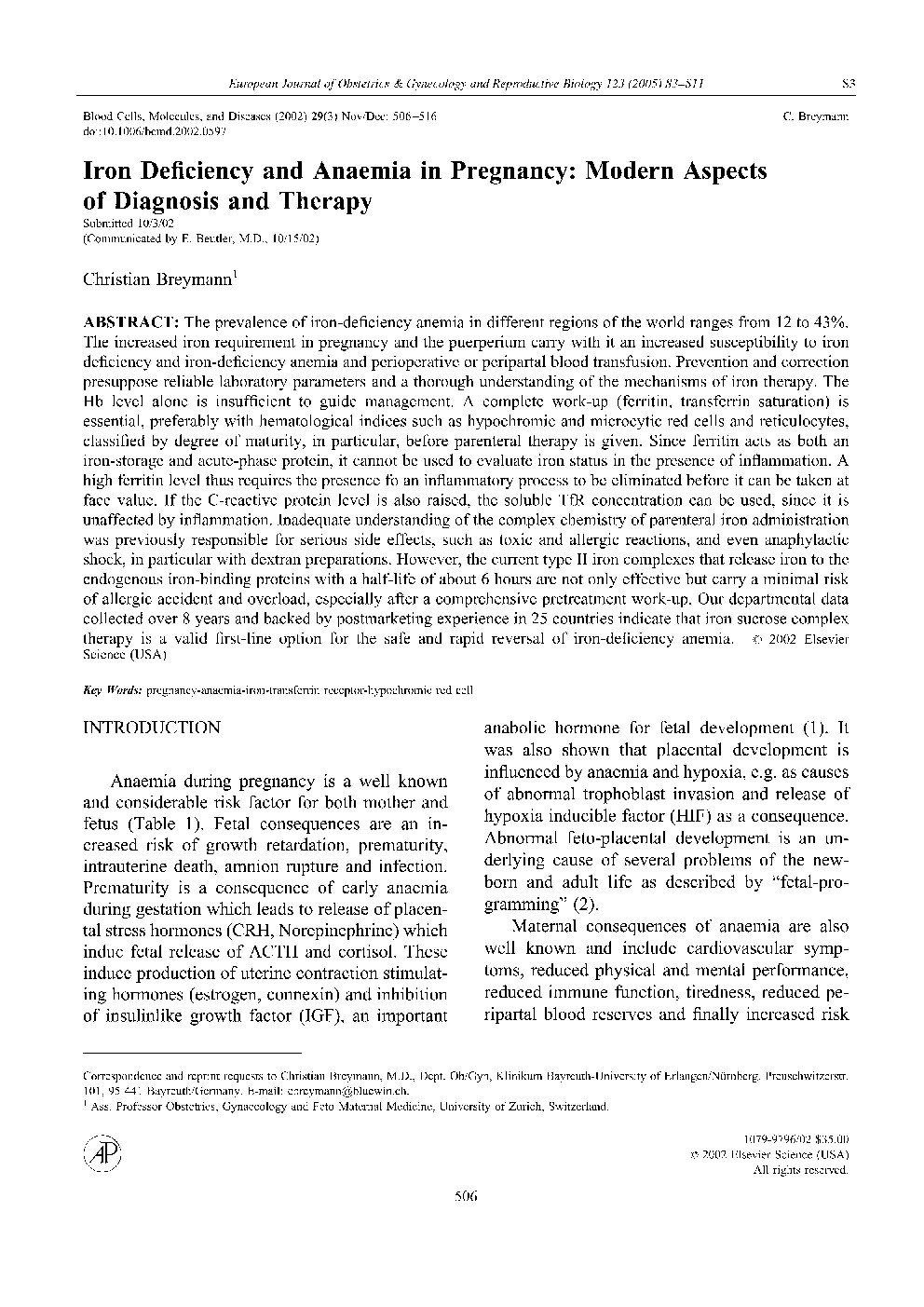| Article ID | Journal | Published Year | Pages | File Type |
|---|---|---|---|---|
| 10064421 | European Journal of Obstetrics & Gynecology and Reproductive Biology | 2005 | 11 Pages |
Abstract
The prevalence of iron-deficiency anemia in different regions of the world ranges from 12 to 43%. The increased iron requirement in pregnancy and the puerperium carry with it an increased susceptibility to iron deficiency and iron-deficiency anemia and perioperative or peripartal blood transfusion. Prevention and correction presuppose reliable laboratory parameters and a thorough understanding of the mechanisms of iron therapy. The Hb level alone is insufficient to guide management. A complete work-up (ferritin, transferrin saturation) is essential, preferably with hematological indices such as hypochromic and microcytic red cells and reticulocytes, classified by degree of maturity, in particular, before parenteral therapy is given. Since ferritin acts as both an iron-storage and acute-phase protein, it cannot be used to evaluate iron status in the presence of inflammation. A high ferritin level thus requires the presence fo an inflammatory process to be eliminated before it can be taken at face value. If the C-reactive protein level is also raised, the soluble TfR concentration can be used, since it is unaffected by inflammation. Inadequate understanding of the complex chemistry of parenteral iron administration was previously responsible for serious side effects, such as toxic and allergic reactions, and even anaphylactic shock, in particular with dextran preparations. However, the current type II iron complexes that release iron to the endogenous iron-binding proteins with a half-life of about 6 hours are not only effective but carry a minimal risk of allergic accident and overload, especially after a comprehensive pretreatment work-up. Our departmental data collected over 8 years and backed by postmarketing experience in 25 countries indicate that iron sucrose complex therapy is a valid first-line option for the safe and rapid reversal of iron-deficiency anemia.
Related Topics
Health Sciences
Medicine and Dentistry
Obstetrics, Gynecology and Women's Health
Authors
Christian Breymann,
